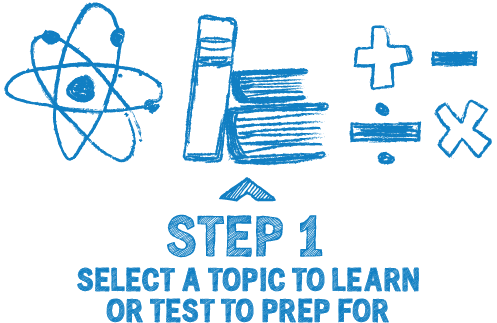Coordinate Plane
Grade 6 Math Worksheets
We embark on an exciting journey into the realm of the coordinate plane—a place where numbers come to life and geometry takes on new dimensions.
Imagine a world where points, lines, and shapes are woven together using the language of coordinates, giving rise to an intricate tapestry of mathematical insights.
Join us as we dive into the heart of the coordinate plane, unlocking its secrets and discovering the limitless possibilities it offers.
Personalized Online Tutoring
Coordinate Plane - Grade 6 Math Worksheet PDF
This is a free printable / downloadable PDF worksheet with practice problems and answers. You can also work on it online.
Sign up with your email ID to access this free worksheet.
"We really love eTutorWorld!"
"We really love etutorworld!. Anand S and Pooja are excellent math teachers and are quick to respond with requests to tutor on any math topic!" - Kieran Y (via TrustSpot.io)
"My daughter gets distracted easily"
"My daughter gets distracted very easily and Ms. Medini and other teachers were patient with her and redirected her back to the courses.
With the help of Etutorworld, my daughter has been now selected in the Gifted and Talented Program for the school district"
- Nivea Sharma (via TrustSpot.io)
The Cartesian Canvas: A Mathematical Universe
At the heart of geometry and algebra lies the Cartesian coordinate plane—an ingenious creation that bridges two seemingly different branches of mathematics. This plane is a playground where points are defined by ordered pairs of numbers, breathing life into abstract concepts and allowing us to explore numerical and visual relationships.
Embracing the Axes: X and Y, Your Navigational Guides
The coordinate plane features two perpendicular lines that intersect at the origin point. The horizontal line is the x-axis, and the vertical line is the y-axis. Together, these axes divide the plane into four quadrants, creating a space for mathematical exploration that extends in all directions.
Plotting Points: Your Mathematical Cartographer
With the axes as your guides, you become a mathematical cartographer, plotting points that bring geometry to life. Each point is represented by an ordered pair (x, y), where x is the distance from the y-axis and y is the distance from the x-axis. Combining these coordinates creates a unique address for every point on the plane.
Graphing Equations: Where Algebra and Geometry Converge
The beauty of the coordinate plane lies in its ability to merge algebraic equations with geometric shapes. Equations transform into lines, curves, and shapes when plotted, representing abstract mathematical concepts visually. As you graph equations, you unveil the interplay between algebraic rules and geometric patterns.
Exploring Symmetry, Slopes, and Transformations
The coordinate plane is a treasure trove of concepts waiting to be discovered. Uncover the secrets of symmetry by exploring how shapes mirror each other across axes. Delve into the world of slopes and understand how the steepness of a line can be quantified. Learn about transformations that shift, rotate, and reflect shapes, adding a dynamic layer to your understanding of geometry.
Navigating Real-World Applications
As we journey through the world of the coordinate plane, we’ll encounter its real-world applications. From engineering and architecture to physics and computer graphics, the coordinate plane is a fundamental tool that underpins various fields of study and empowers us to solve real-world problems.
The coordinate plane is divided into four quadrants. These quadrants are labeled as follows:
- First Quadrant (Q1): This quadrant is located in the upper right-hand side of the coordinate plane. It contains points where both the x-coordinate and the y-coordinate are positive.
- Second Quadrant (Q2): This quadrant is located in the upper left-hand side of the coordinate plane. It contains points where the x-coordinate is negative, and the y-coordinate is positive.
- Third Quadrant (Q3): This quadrant is located in the lower left-hand side of the coordinate plane. It contains points where both the x-coordinate and the y-coordinate are negative.
- Fourth Quadrant (Q4): This quadrant is located in the lower right-hand side of the coordinate plane. It contains points where the x-coordinate is positive, and the y-coordinate is negative.
Solving mathematical questions on the coordinate plane involves a systematic approach to working with points, lines, shapes, and equations. Here are the steps to help you tackle problems related to the coordinate plane:
Step 1: Understand the Problem. Read the problem carefully to grasp what is being asked. Identify the information provided, the type of mathematical concepts involved (e.g., plotting points, graphing equations, finding distances), and the specific tasks required.
Step 2: Draw the Coordinate Plane. Draw a clear and accurate coordinate plane on your paper. Label the x-axis and y-axis with appropriate values, keeping in mind the given range or context of the problem.
Step 3: Identify Key Points. Identify the key points, lines, or shapes relevant to the problem. It could involve points to be plotted, equations to be graphed, or geometric objects to be analyzed.
Step 4: Plot Points. If the problem involves plotting points, use the given coordinates to mark the points on the coordinate plane. Make sure to label each point with its corresponding label or letter.
Step 5: Graph Equations. If you need to graph equations, plot points that satisfy the equation and then connect them to form the appropriate line or curve. You should find additional points using slope and y-intercept for linear equations.
Step 6: Analyze Relationships. Analyze the relationships between the plotted points, lines, or shapes. Look for patterns, symmetries, and intersections that provide insight into the problem.
Step 7: Calculate Distances or Lengths. If distances or lengths are involved, use the distance formula or Pythagorean theorem to calculate them accurately. This is often needed when dealing with geometric shapes or lines.
Step 8: Solve Equations. If equations are part of the problem, solve them algebraically or graphically as needed. Intersection points of graphs might be solutions to systems of equations.
Step 9: Verify and Interpret. Check your solutions and interpretations in the context of the problem. Does the solution make sense? Does it answer the question asked in the problem?
Step 10: Present Your Solution. Write down your solution clearly and neatly. Label graphs and points, explain your approach, and show any calculations or formulas used.
“There have been times when we booked them last minute, but the teachers have been extremely well-prepared and the help desk at etutorworld is very prompt.
Our kid is doing much better with a higher score.”
6th Grade Tutoring
eTutorWorld offers Personalized Online Tutoring for Math, Science, English, and Standardised Tests.
Our Tutoring Packs start at just under $22.49 per hour, and come with a moneyback guarantee.
Schedule a FREE Trial Session, and experience quality tutoring for yourself. (No credit card required.)
Example
Example: Plotting and Identifying Points on the Coordinate Plane
Problem: Plot the points C(2, 4) and D(-3, 1) on the coordinate plane. Determine in which quadrant each point lies.
Solution:
Step 1: Understand the Problem. We are given two points, C(2, 4) and D(-3, 1), that need to be plotted on the coordinate plane. We also need to identify the quadrant in which each point lies.
Step 2: Draw the Coordinate Plane. Draw a coordinate plane labeled x-axis and y-axis.
Step 3: Plot the Points
- Plot point C(2, 4) by moving 2 units to the right along the x-axis and 4 units up along the y-axis.
- Plot point D(-3, 1) by moving 3 units to the left along the x-axis and 1 unit up along the y-axis.
Step 4: Identify Quadrants
- Point C(2, 4) is in the first quadrant (Q1) because both its x and y coordinates are positive.
- Point D(-3, 1) is in the second quadrant (Q2) because its x coordinate is negative, and its y coordinate is positive.
Step 5: Present Your Solution Points C(2, 4) and D(-3, 1) have been plotted on the coordinate plane. Point C is in the first quadrant, and point D is in the second quadrant.
Step 6: Visualize the coordinate plane with points C and D to better understand their positions and quadrants.
Do You Stack Up Against the Best?
If you have 30 minutes, try our free diagnostics test and assess your skills.
FAQs
What is the coordinate plane?
The coordinate plane, also known as the Cartesian plane, is a two-dimensional plane with two perpendicular axes, the x-axis (horizontal) and the y-axis (vertical). It’s used to represent and locate points in space using ordered pairs (x, y).
How is the coordinate plane divided?
The coordinate plane is divided into four quadrants: the first quadrant (Q1) in the upper right, the second quadrant (Q2) in the upper left, the third quadrant (Q3) in the lower left, and the fourth quadrant (Q4) in the lower right.
What is the origin in the coordinate plane?
The origin is the point where the x-axis and y-axis intersect. Its coordinates are (0, 0), and it serves as the reference point for locating all other points on the coordinate plane.
How do I plot points on the coordinate plane?
To plot a point (x, y) on the coordinate plane, move x units along the x-axis (right for positive, left for negative) and y units along the y-axis (up for positive, down for negative). Mark the intersection as your point.
How can I identify the quadrant of a point?
Identify the quadrant of a point by checking the signs of its x and y coordinates. If x and y are both positive, the point is in Q1, if x is negative and y is positive, it’s in Q2, and so on.

Gloria Mathew writes on math topics for K-12. A trained writer and communicator, she makes math accessible and understandable to students at all levels. Her ability to explain complex math concepts with easy to understand examples helps students master math. LinkedIn
Affordable Tutoring Now Starts at Just $22.49
eTutorWorld offers affordable one-on-one live tutoring over the web for Grades K-12. We are also a leading provider of Test Prep help for Standardized Tests (SCAT, CogAT, MAP, SSAT, SAT, ACT, ISEE, and AP).
What makes eTutorWorld stand apart are: flexibility in lesson scheduling, quality of hand-picked tutors, assignment of tutors based on academic counseling and diagnostic tests of each student, and our 100% money-back guarantee.
Whether you have never tried personalized online tutoring before or are looking for better tutors and flexibility at an affordable price point, schedule a FREE TRIAL Session with us today.
*There is no purchase obligation or credit card requirement
Grade 6 Science Worksheets
- Inquiry process
- Nature of Science
- Scientific Inquiry
- Inquiry, Analysis and Problem Solving
- Ethical Practices
- Science and Society
- Biotic and Abiotic Factors
- Impact of Organisms
- Adaptation
- Spheres of Earth
- Natural Resources
- Environmental Issues
- Conservation of Earth
- Understanding Technology
- Abilities To Do Technological Design
- Structure of Earth
- Solar System
- Rocks and Fossils
- Earth Systems
- Plate Tectonics
- Evolution
- Magnetic Field of Earth
- Geologic Time
- Materials and Processes That Shape a Planet
- Astronomy
- Ecology
- Energy
- Kinetic and Potential Energy
- Energy Transfer
- Matter and its Structure
- States of Matter
- Physical and Chemical Changes
- Force and Motion
- Electricity and Magnetism
- Wave Interactions
- Sound
- Light
- Introduction to Life Science
- The Origin & History of Life On Earth
- Plant and Animal Cells
- Parts of a Cell
- The Cell Cycle
- How Living Organisms Get Energy
- Classification of Organisms
- How Plants Grow & Reproduce
- The Human Respiratory System
- The Human Cardiovascular System
- The Human Digestive System
- The Human Endocrine Systems
- The Human Nervous System
- The Human Muscular System
- The Human Skeletal System
IN THE NEWS

Our mission is to provide high quality online tutoring services, using state of the art Internet technology, to school students worldwide.
Online test prep and practice
SCAT
SSAT
ISEE
PSAT
SAT
ACT
AP Exam
Science Tutoring
Physics Tutoring
Chemistry Tutoring
Biology Tutoring
Math Tutoring
Pre-Algebra Tutoring
Algebra Tutoring
Pre Calculus Tutoring
Calculus Tutoring
Geometry Tutoring
Trigonometry Tutoring
Statistics Tutoring
Quick links
Free Worksheets
Fact sheet
Sales Partner Opportunities
Parents
Passive Fundraising
Virtual Fundraising
Our Expert Tutors
Safe and Secure Tutoring
Interactive Online Tutoring
After School Tutoring
Elementary School Tutoring
Middle School Tutoring
High School Tutoring
Home Work Help
Math Tutors New York City
Press
©2022 eTutorWorld Terms of use Privacy Policy Site by Little Red Bird
©2022 eTutorWorld
Terms of use
Privacy Policy
Site by Little Red Bird









